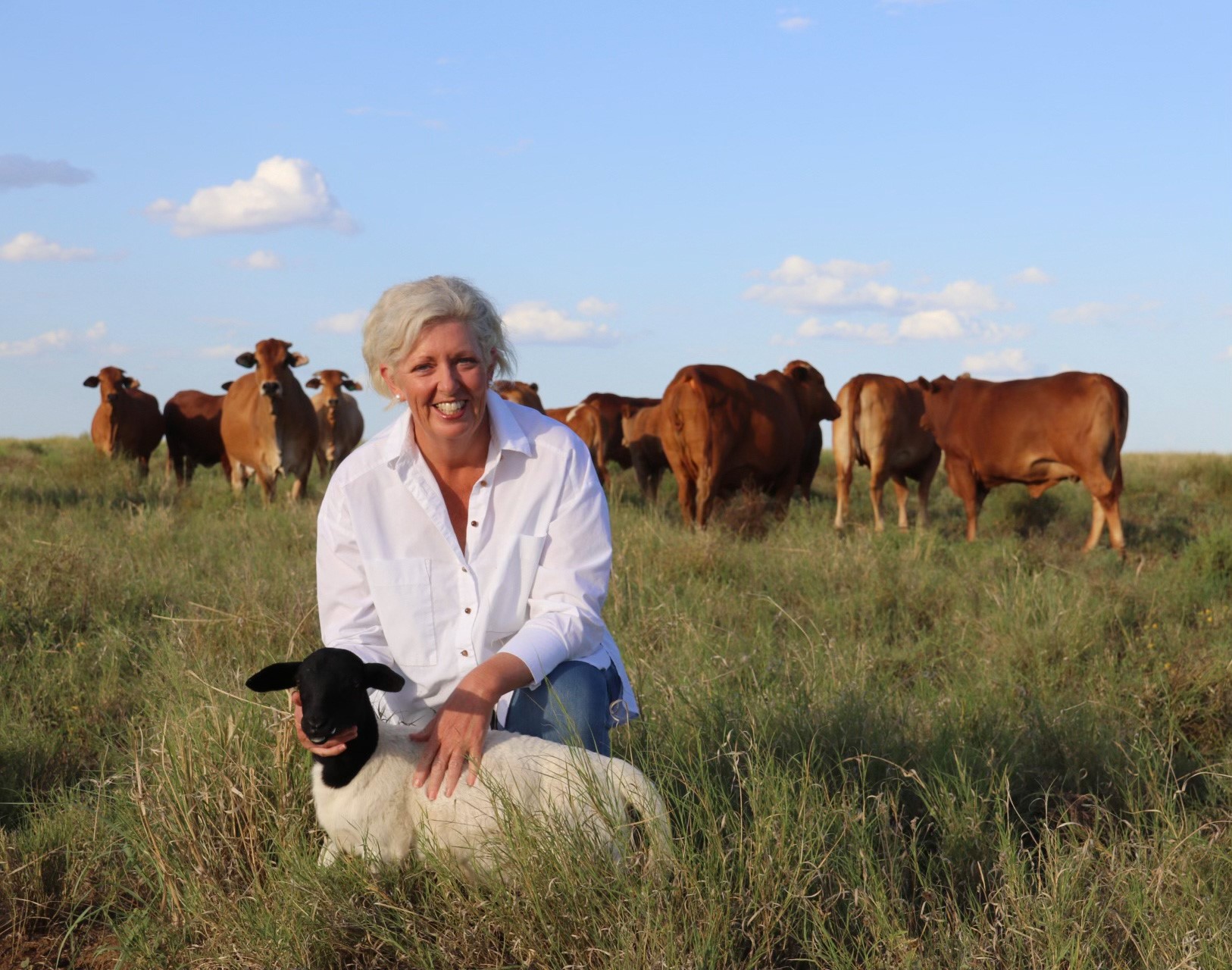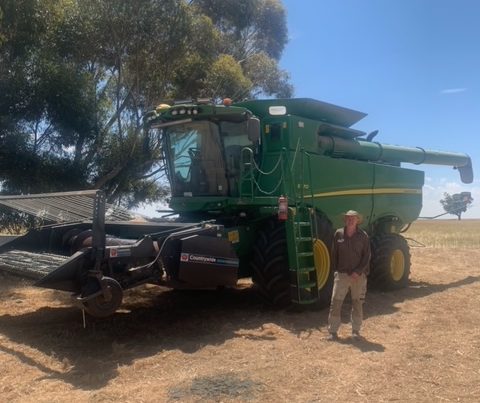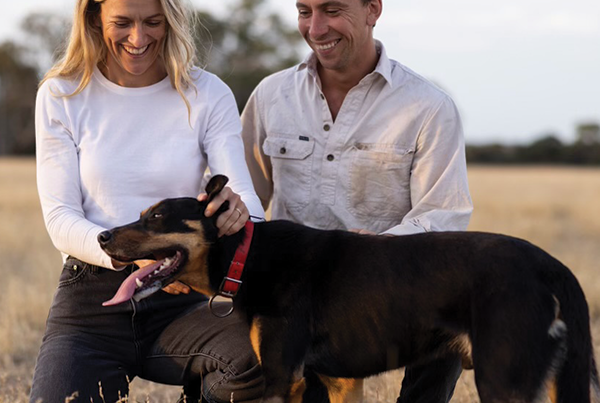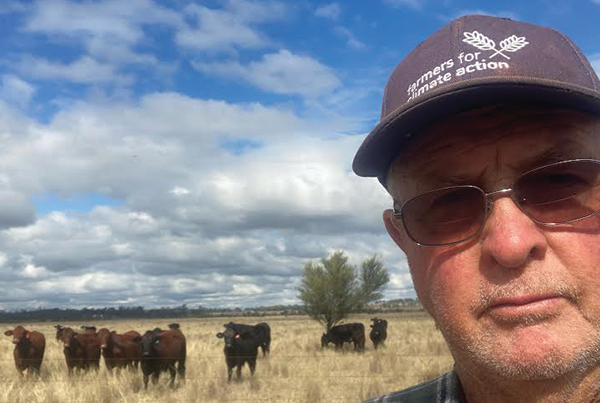At a glance
Who: Kylie Burton
What: Extensive multi-species livestock that includes cattle, Dorper sheep and goats in managed herds across 8282ha.
Where: NW of Barcaldine in Central West Queensland. Iningai Country.
Can you tell us about your property?
My husband Bill and I purchased Saltern Creek in 2010 as a grazing operation primarily running a commercial beef cattle herd. After fully destocking in 2018 (due to ongoing drought), we reintroduced stock strategically and methodically to ensure our pasture recovery would be optimised. Goats were the first ruminants reintroduced into our Boree wooded downs and Soft Gidgee country, we then bought back a quarter of our breeding cows before introducing Dorper sheep to the mix. We have a mix of Ashy and Open Downs along with timber country so we monitor preferential grazing habits and move stock accordingly.
What are some of the opportunities you see for your business/property in coming years?
We are excited about the opportunities to further develop our property with a regenerative agriculture lens while moving towards reducing our carbon footprint. We are keen to adopt strategies and technologies that allow both our land and business to thrive in what will continue to be extremely difficult climatic conditions. We have begun to implement regenerative agricultural grazing management and practices which includes monitoring soil, pastures, biodiversity and recording data to optimise our decisions moving forward. We want to be part of the solution towards producing carbon neutral red meat. We are continually seeking opportunities to improve the biodiversity of our land.
And what are you main challenges now, and into the future? How has climate change impacted your farm business?
Climate Change continues to be our greatest threat, with the impacts of extreme drought and heatwave conditions having been part of our reality for the last decade. The ongoing and relentless drought conditions we faced had a significant impact on our soil, pasture and trees. By 2018 we were fully destocked, before undertaking an overhaul of our business. We have no business without healthy soils to grow pastures, so while destocked we undertook an extensive fencing project to ensure we could reduce the impact of grazing and erosion across different land types. We will continue to be on the frontlines of climate change but are working hard to become smarter at how we confront this challenge. More broadly, over the last two decades, the politicisation of climate change has meant ‘on farm’ investment opportunities have fallen through.
What are some of the on-farm adaptations or changes you’ve been employing in recent years and what’s driving them? How successful have they been, and what benefits have you seen as a result?
Given we have plenty of sunshine, it made sense to install solar energy which has the added bonus of significant yearly cost savings (it paid for itself in under 3 years). Our grazing practices include adaptive multi-paddock grazing, while varying our stock types (cattle, Dorper sheep or goats) helped to ensure groundcover is retained throughout dry periods. We track and record our grazing management electronically, this data can then be reviewed and evaluated to ensure our decisions are informed. We are in the process of setting up soil testing sights to gain a more comprehensive understanding of what is happening below the ground given the extreme variability of conditions above ground. As mentioned earlier, fencing has been part of the big picture in terms of allowing us to control and manage grazing pressure. Fencing off waterways and implementing a well-planned water reticulation system for stock while being able to lock up country and give it time to recover, has paid dividends for our perennials. Fencing has also allowed us to run managed goat herds that have been instrumental in utilising woody weeds as part of their browsing diet.
What are your hopes for Ag in Australia, into the future?
My ambition for Australian Agriculture is to thrive in terms of productivity gains in a climate neutral environment – a win-win! As we continue to offer the world healthy food and fibre produced ethically and sustainably, we need to make it easier for all Australian farms to adopt technologies or adapt practices to ensure they are taking practical steps to reduce their carbon footprint. I want to be part of the solution and ‘pay it forward’ to future generations.







